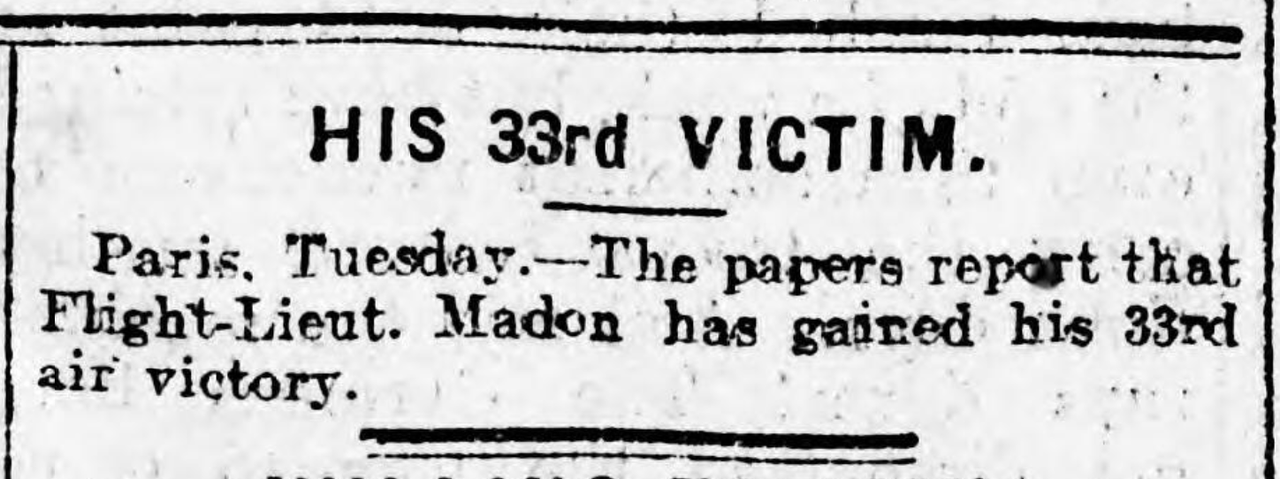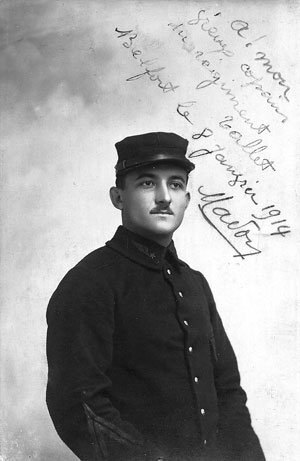"Qui s'y frotte s'y pique"Capitaine Georges Felix Madon ranked among France's top aces of the Great War and among most experienced pilots of any nation. In a combat era when an airman's life was measured in weeks, Madon fought through the entire war. The Tunisian-born pioneer pilot learned to fly way back in 1911 and, after being denied acceptance as a pilot for the Ottoman Empire, enlisted in the French military in 1912. Upon the outbreak of hostilities Madon was flying reconnaissance and night-bombing missions with
Escadrille BL30. A stray flight led him to being interned in neutral Switzerland for most of 1915, until he managed to escape by 'chloroforming and kidnapping his guard'!
Madon's first aerial victory occurred on the same day the Imperial German Flying Corps established
Jagdstaffeln 9-12, 14 and 15. From the fall of 1916 until the armistice he scored a run of forty confirmed kills with another sixty-four
non confirmé. This winning streak made clear his oft-repeated boast of the old French phrase 'he who rubs against it gets pricked'. Today's news marks Madon's victory over a German two-seater in the sky above Rosnay-Gueux. Like so many other aces who survived the war, Madon was killed in a flying accident and too young an age.
(from the Cambria Daily Leader, 17 June 1918):


(image via albindenis.free.fr)
Check out forum member John Marco's virtual rendering of Madon's scarlet Spad XIII:
https://forum.ww1aircraftmodels.com/index.php?topic=3656.msg98978#msg98978